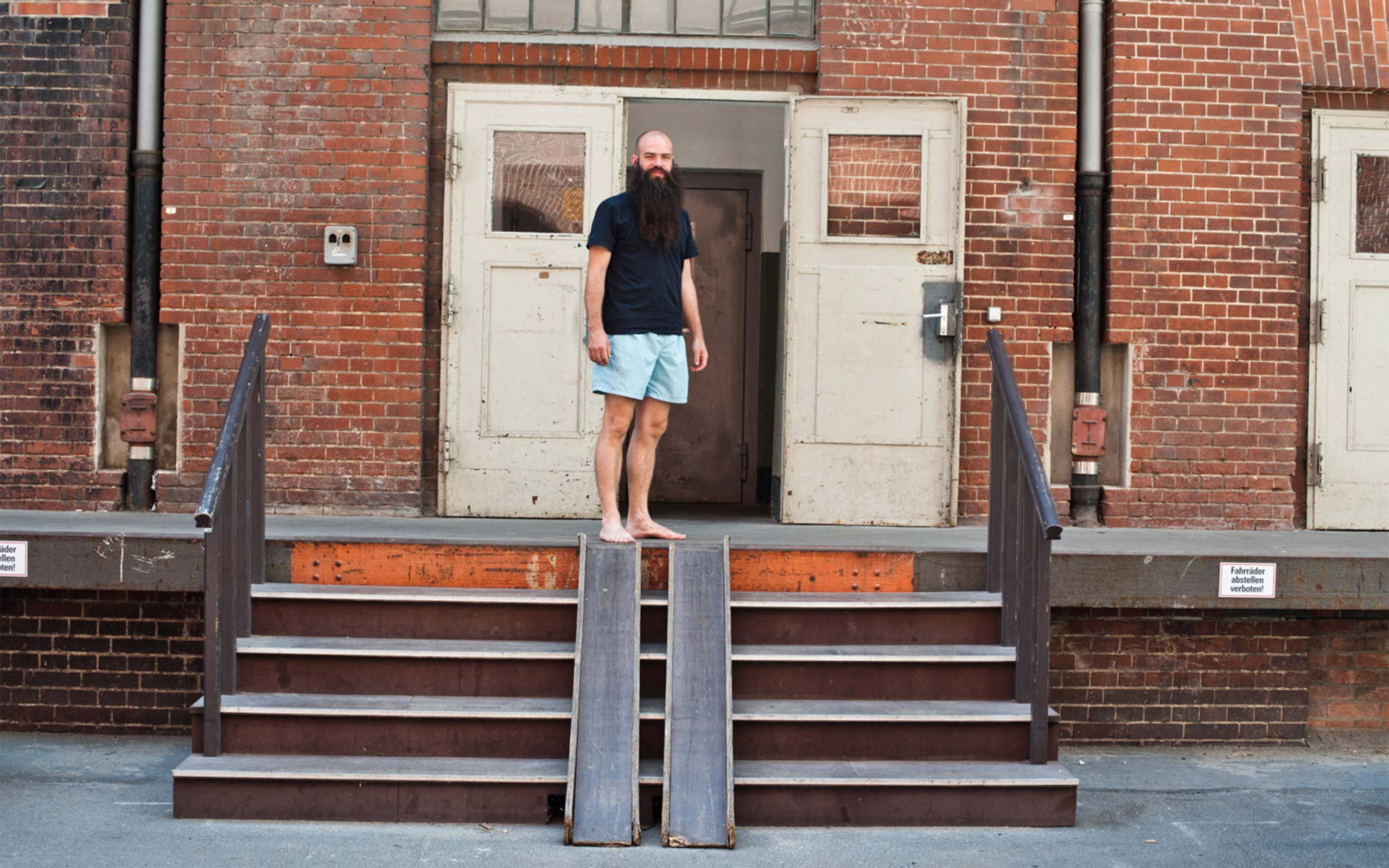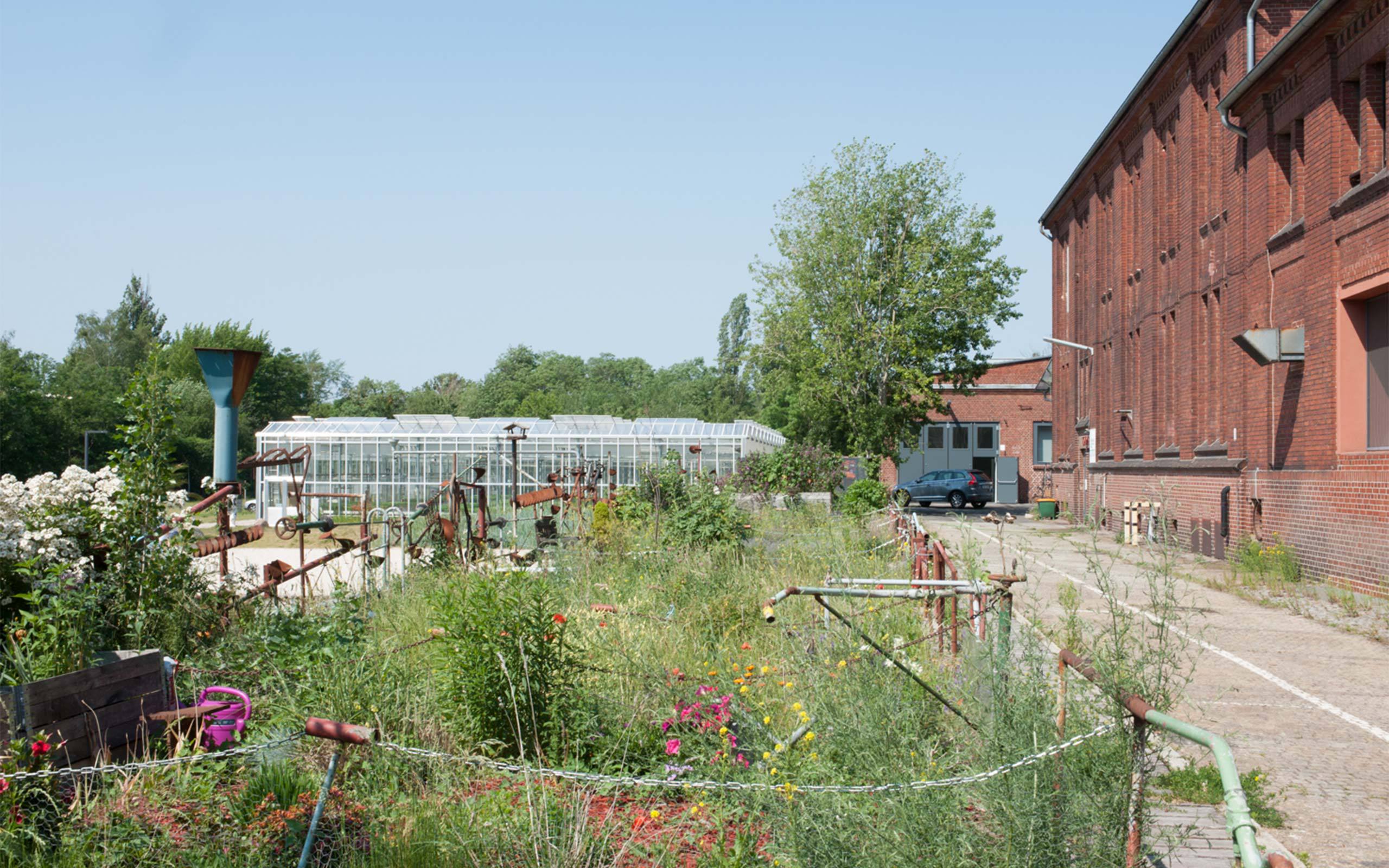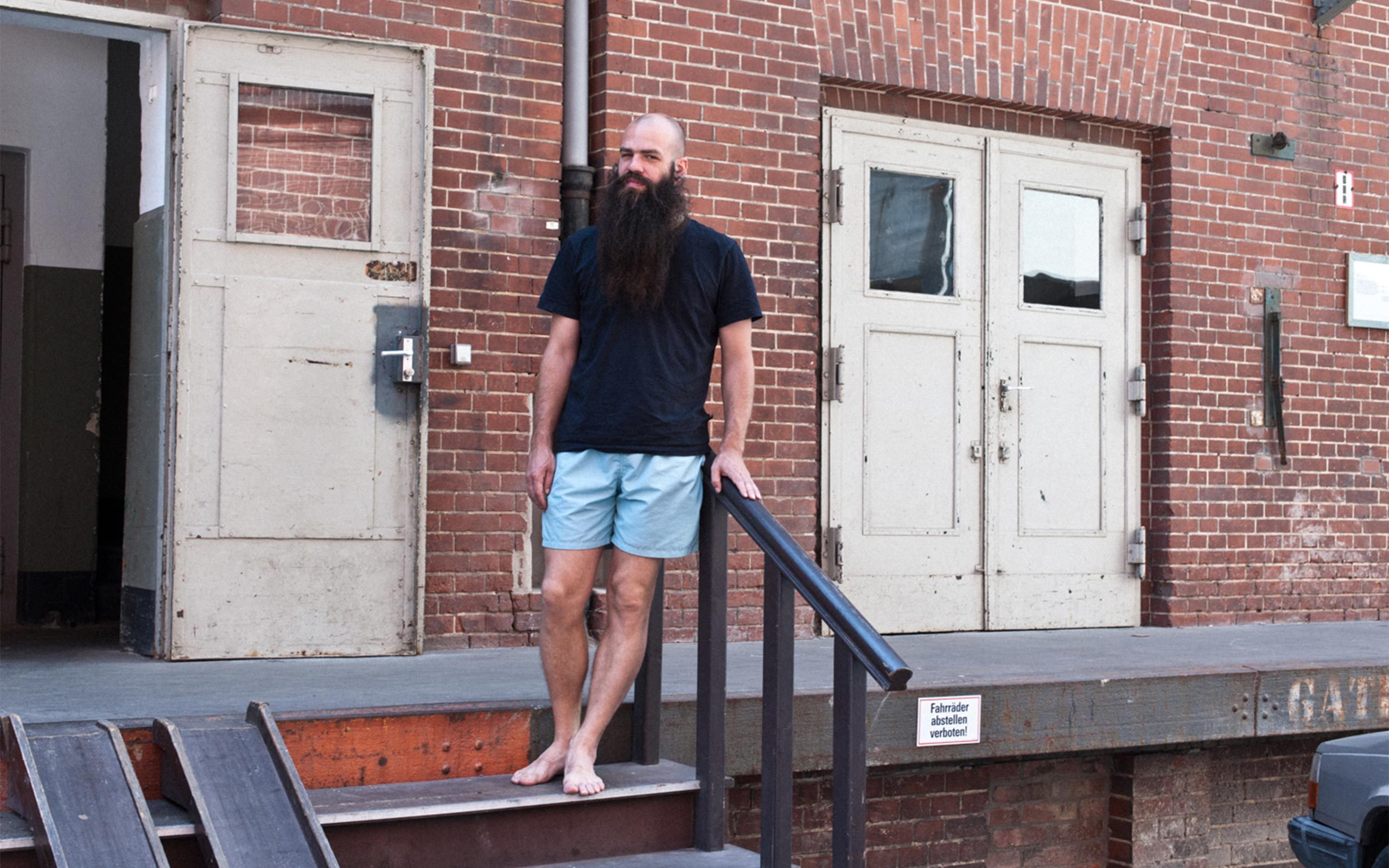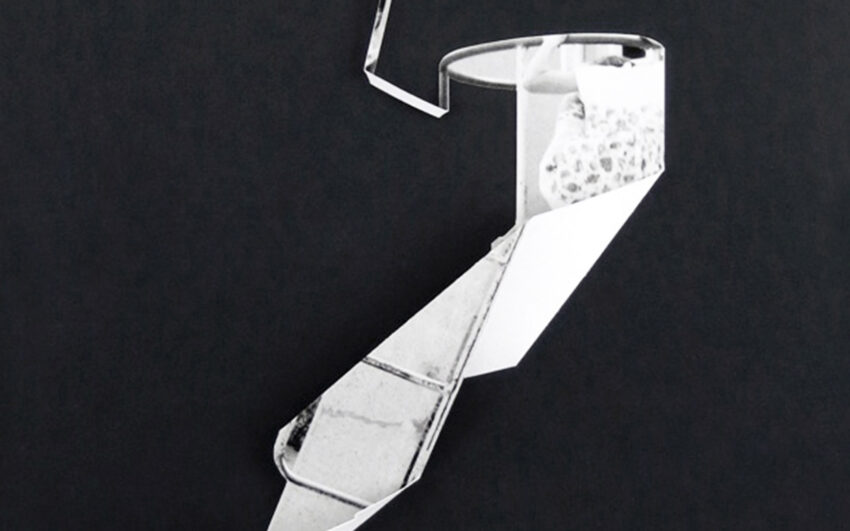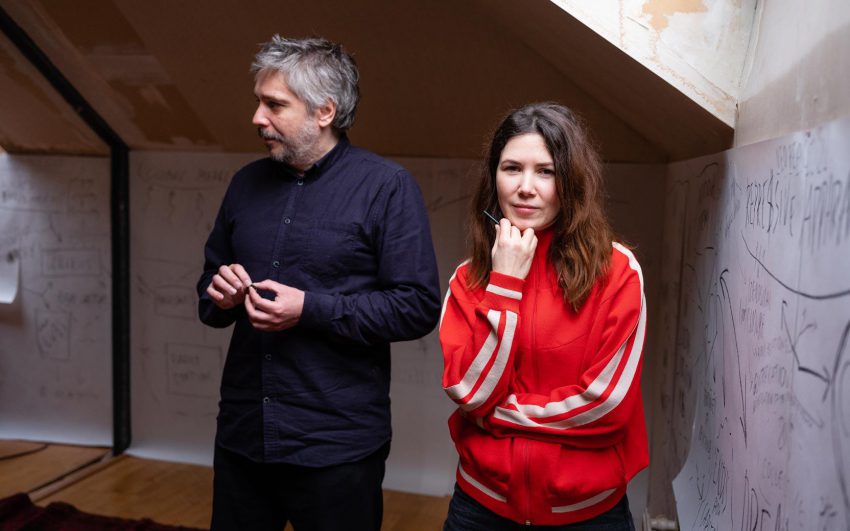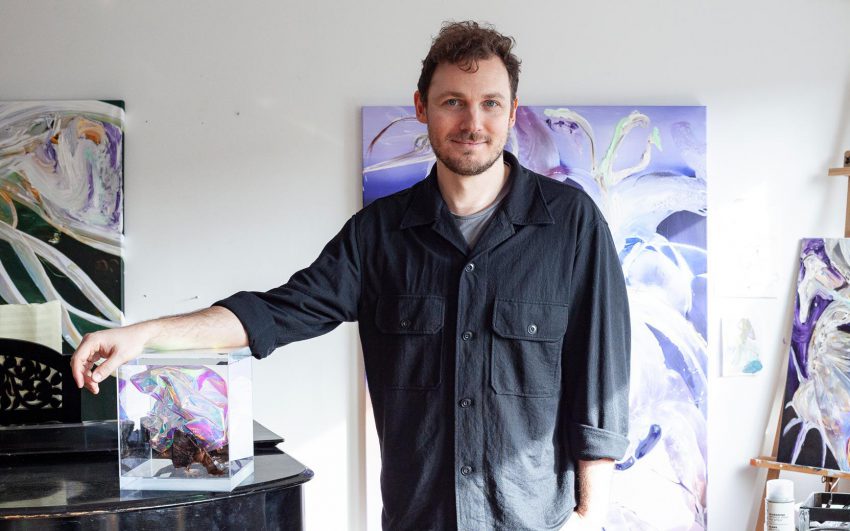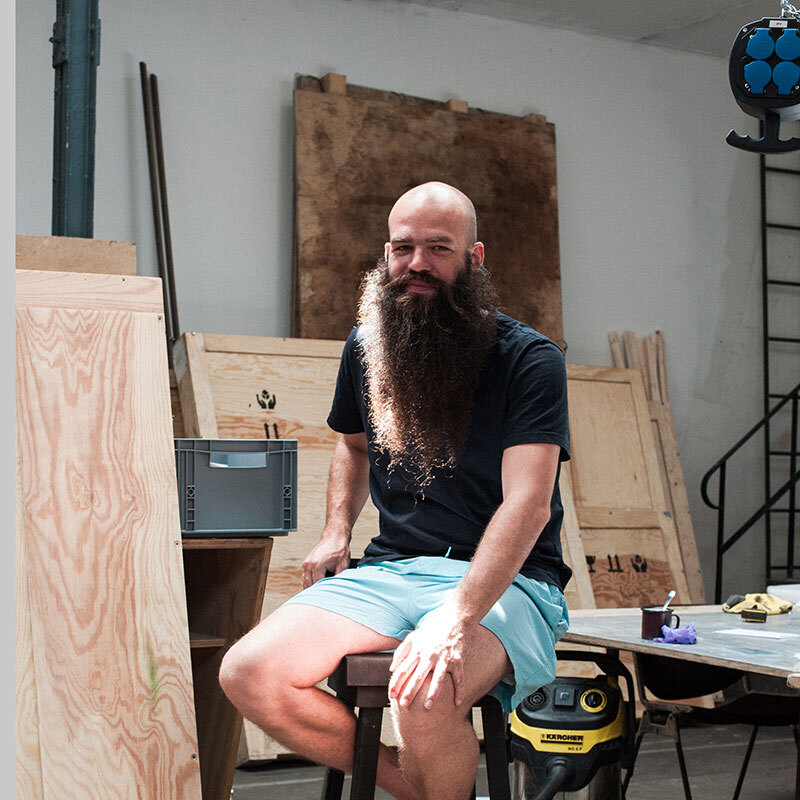Julius von Bismarck is internationally known for his, often extreme, art interventions. In his works he deals with human perception and the relationship between man and nature. We spoke with him about his sources of inspiration, which range from nuclear physics to philosophical questions of principle, and about his experience of being Iceland's number one public enemy.
Julius, you didn't come to art the conventional way. Can you describe the path that led you here?
I first studied computer science, visual communication and also physics. I then became interested in robotics – I found quite a number of things interesting – and in the beginning I thought if I were to study art, then I ought to abandon all of my other interests. Having studied visual communication, digital media, explored film and experimental work, having some technical proficiency, and having completed my first projects, I realized that an artistic aspect was inherent to them. Then, after the first successes with my projects I noticed that people were paying attention to my work. With art, it has always been important to me that it should not just be fun for oneself, but that other people should enjoy it equally too. It further occurred to me that as an artist I could do everything I wanted to do without limiting myself, and in doing so realize what I wanted to do and to simply call it art. I thought, that perhaps this would enable me to function better than in any other profession in which I would probably have to limit myself.
It was at that time that Ólafur Elíasson came to Berlin and founded the Institute for Spatial Experiments...
At the time, I was very interested in spatial perception and had already realized that the term suited me. What I also found exciting was that he had brought things into the art world that had not previously been accepted until that time. I felt it was a good environment in which to study once more, and so I did.
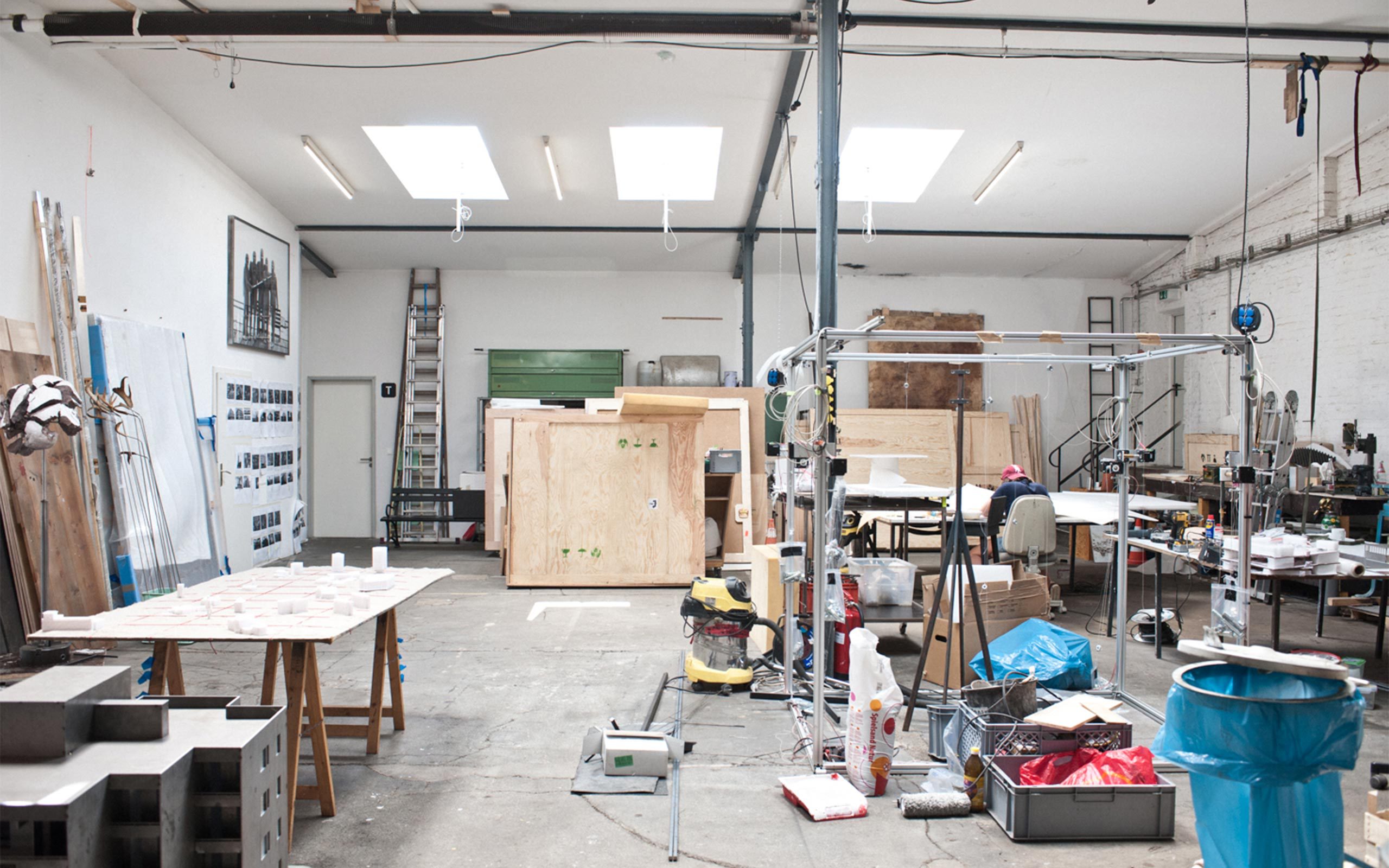
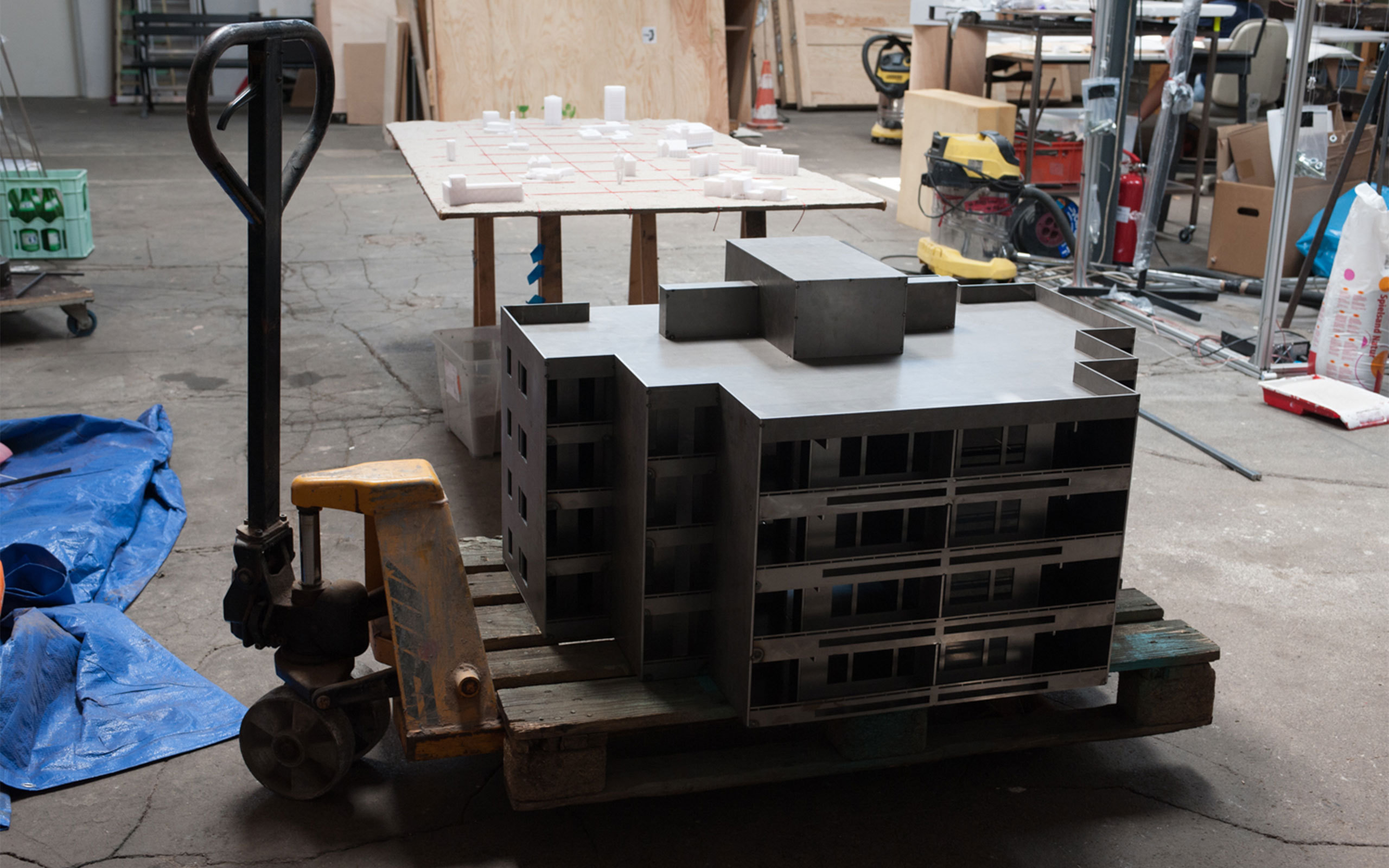
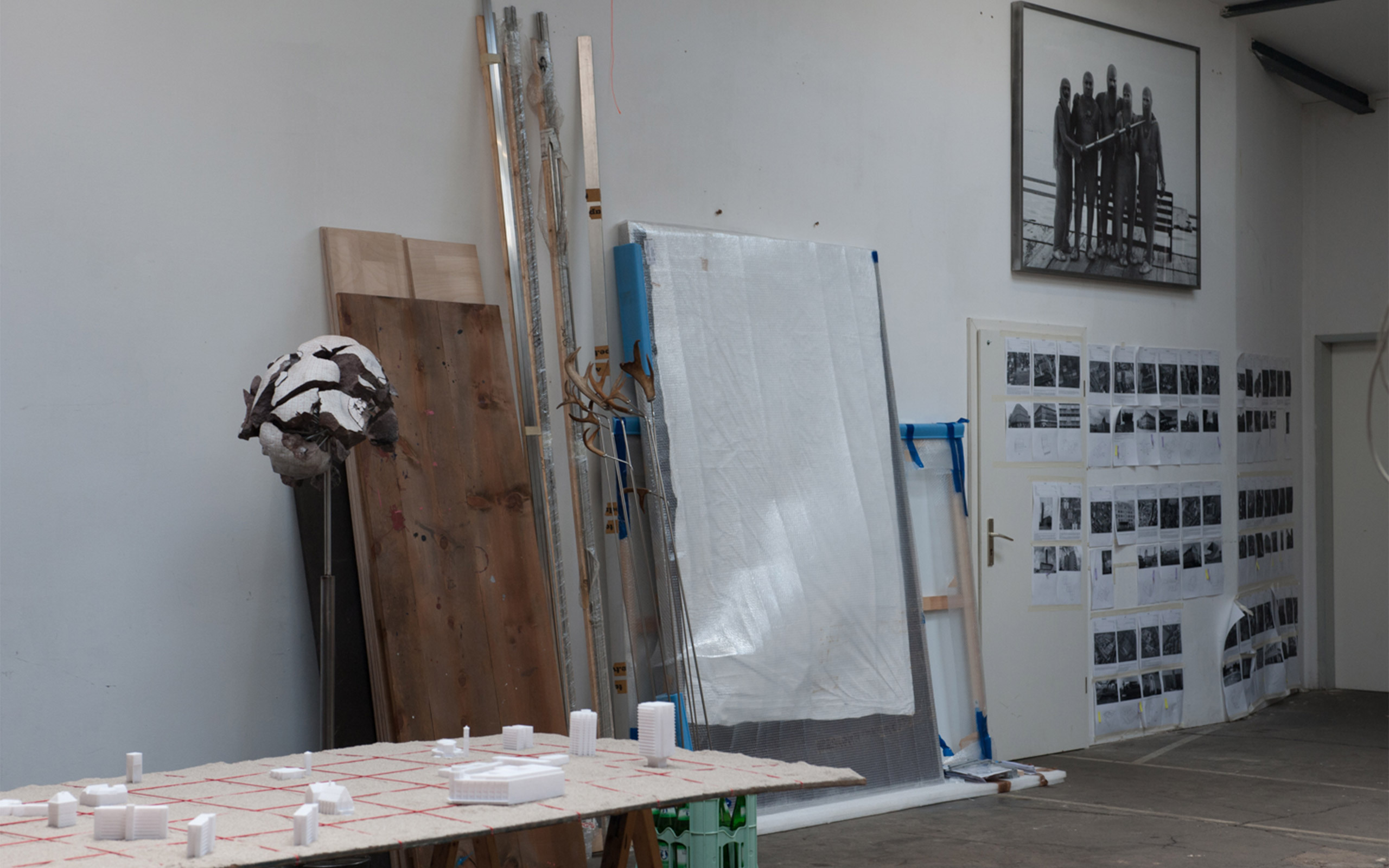
So it was primarily the idea of freedom that motivated you to become an artist?
Yes, you could say that, the freedom obtained as an artist was actually greater than I had expected, but this freedom, and free space, one has to create for oneself.
You’ve just said that Ólafur Elíasson, with his Institute for Spatial Experiments created an environment that has also allowed for other influences that might not be regarded as a classic source for artistic practice.
Were there any other stimulating aspects that interested you personally?
Yes, I found it interesting to read scientific magazines. I've always found philosophy as well as the combination of natural science and philosophy very exciting, the in-between, and the question of how to interpret research results on a meta-level, from which I drew a lot of inspiration. This can also be seen in my older works. Some of these are direct translations of philosophical questions of principle.
You were once at the nuclear research center CERN at Meyrin in Switzerland where extensive research into physics is carried out. Why did you actually want to go there?
I wasn’t really interested in research in itself but rather in what happens with our perception when we look at research results. As human beings we think that we perceive the world as it is. But we perceive the world as we have constructed it, on one hand culturally and on the other hand as we have constructed it, inasmuch as it is possible to perceive it at all. That is a very specific way to see the world. There are so many different ways to see the world which are no less correct, and in some instances, more correct.
Is Greek mythology for you as much a source of inspiration as natural science or philosophy? You often play with it, for example in the title of your work The Mimic of Tethys, a buoy floating freely in space, which until recently could be seen in the Palais de Tokyo in Paris.
In this case the title occurred rather by chance, but I really liked it, because I also explore the relationship between man and supposed nature, which is presently strongly personified becoming almost a kind of deity again. Therefore, I introduced this God again, who seems to be so far removed from such an industrial buoy made of steel. Actually, the oceans have long been considered defeated. These buoys, which help navigation, are a symbol of this. Shipwreck is one thing that nowadays happens almost exclusively to refugees, for political reasons. It is no longer the human being losing against nature, but refugees drown, because they have no other option in their urge to migrate to Europe. On the other hand, the oceans suffer from our pollution, from overfishing, and from rising water levels. There is the suffering sea! It has so many new meanings, this sea. Many people tend to personalize it. The Mediterranean represents the European wall against the refugees.
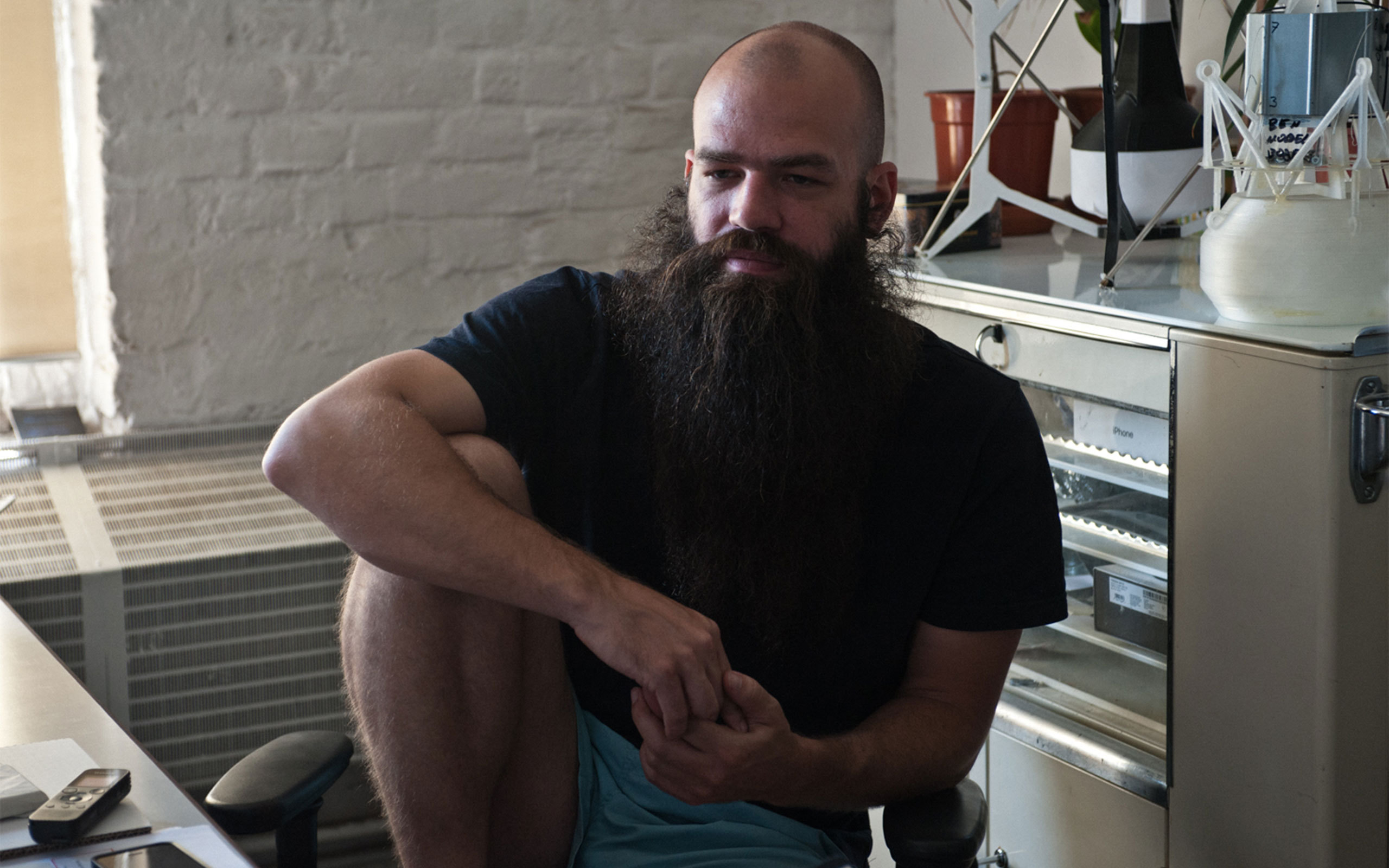
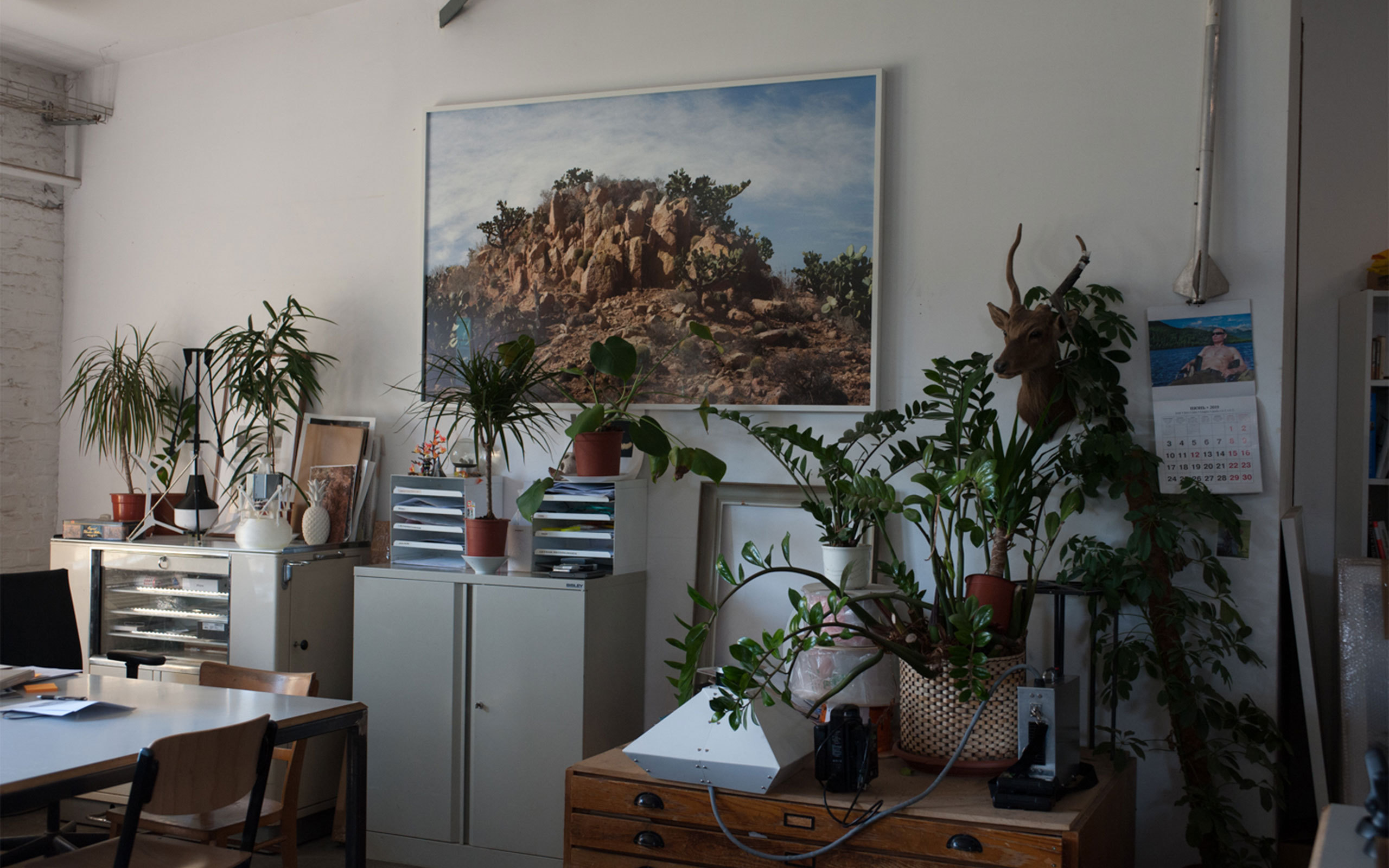
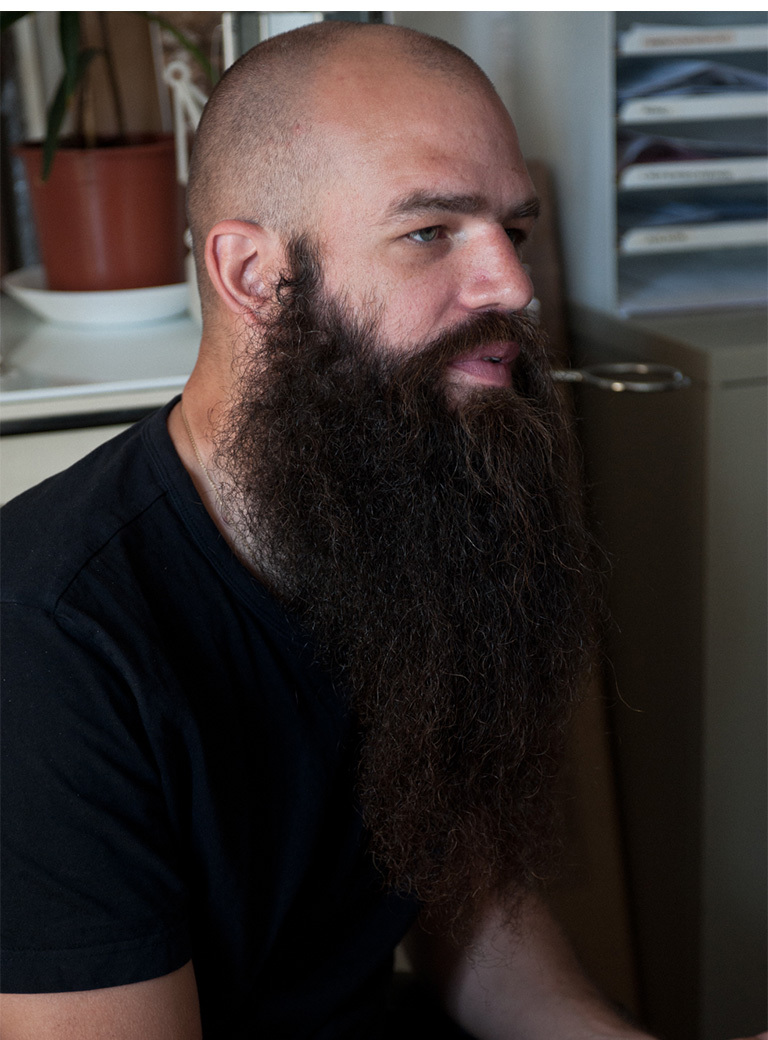
In your earlier work, Punishment, you physically whipped the sea referring to it as a deity. How are these two works connected?
The Mimik of Tethys is a reference to Punishment. I have whipped the sea as a reenactment of Xerxes, who had the sea whipped after a thunderstorm at Hellespont had destroyed his newly built pontoon bridges. This is another personalization in which the sea was punished. I am very interested in this personalization or deity that is seen in it, it interests me very much, because I believe that it is relevant to how we locate ourselves in this system between man and his environment. Nature actually no longer exists, because nature as a term is something that functions only without man. That’s why this term no longer makes sense. This is one thing that has long been philosophically clear but people still work with the term charging it strongly. There is currently a great transfiguration that is still being pushed further instead of clarifying it. After the Enlightenment, we find ourselves again in a phase of transfiguration. That is the background against which many of my works must be seen.
And thus, the sea became the concrete, personified representative for nature?
In Punishment I didn’t merely whip the sea. If the sea can be a person, then the mountain and the forest can be a person as well. First, I whipped the Alps, the sea was last but I took the inspiration from the sea. The sea often appears so banal when someone is fishing, surfing, or swimming. But at some point, I stood on the beach in Rio and thought – just now the sea is as it has to be as a personality for this work. At this moment one no longer thinks of bathing fun, but of a test of strength; at that moment, everything was spontaneous and unplanned.
With your good friend Julian Charrière, who, like you, is very successful internationally with his art, you share a studio and have also realized some works together. How did you get to know each other?
Julian and I met at Ólafur Elíasson’s Institute for Spatial Experiments. And it wasn’t that Ólafur said what we should do when and how. On the contrary, Ólafur created a space that we had to fill. One dealt with one’s fellow students and in this context we all had many exhibitions together which we organized ourselves. It worked because we all helped each other.
What it is that connects you and Julian in particular?
As children, Julian and I were both nature boys, we spent a lot of time in the forest. I also had a technical background, I was a nerd. At some point, we thought about building a machine that would automatically paint pigeons. With the old computer games, the first GTA version, there was a game where you drove your car into a garage and it came out a different color. And we thought, we could do that with pigeons as well.
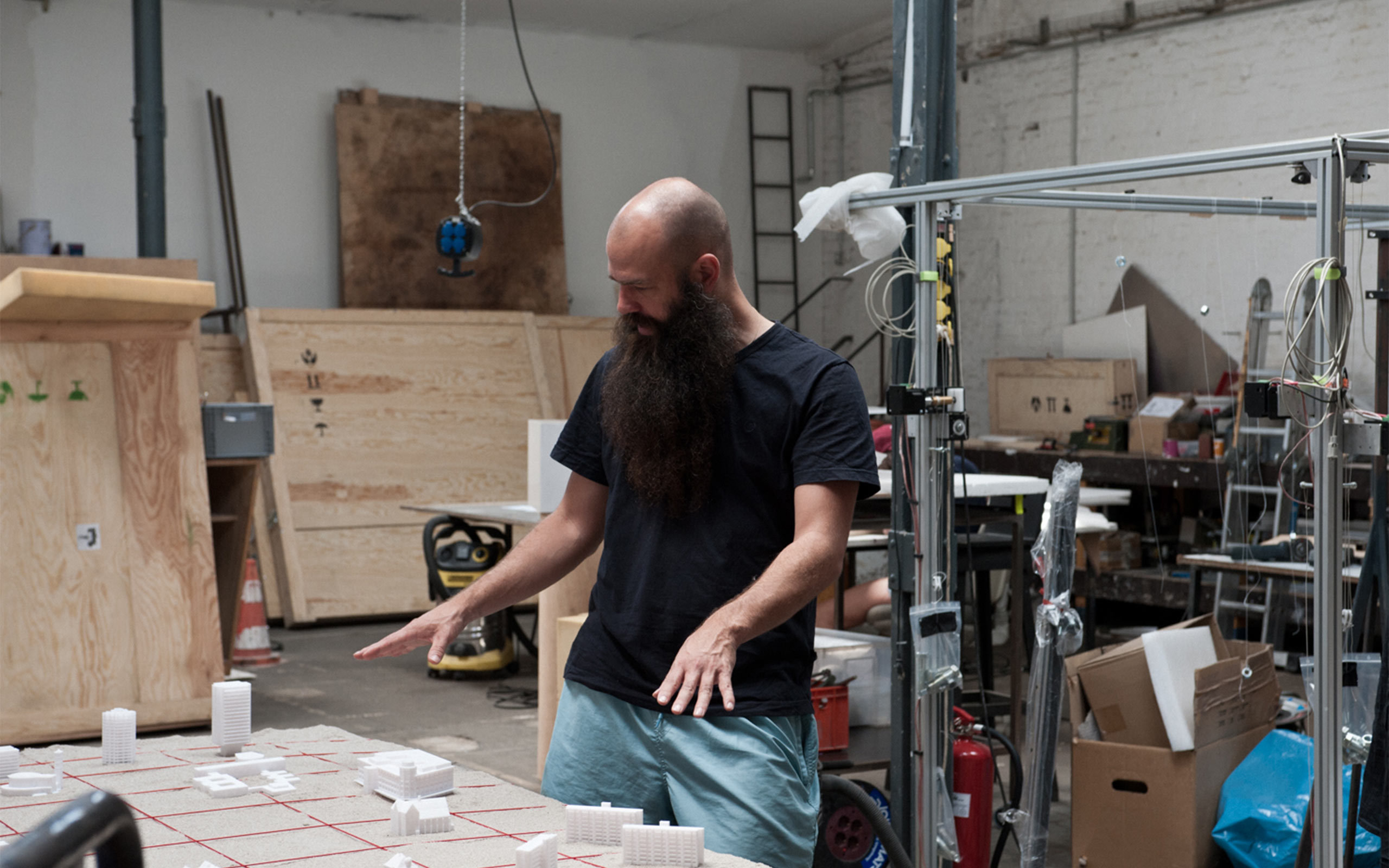
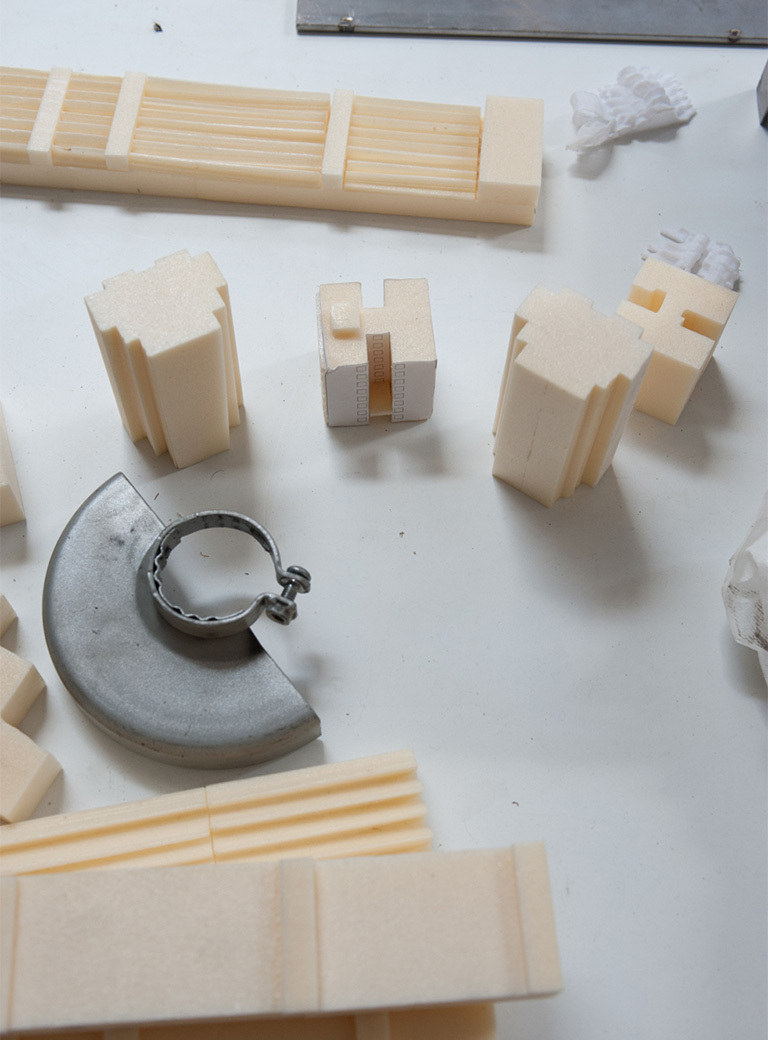
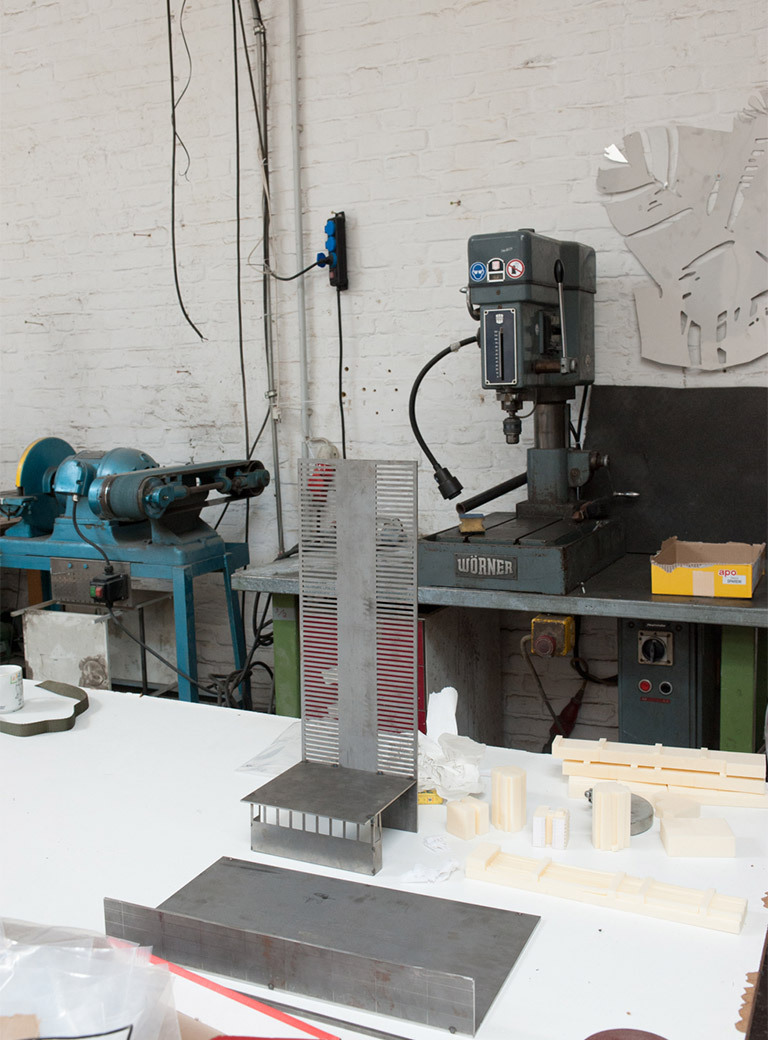
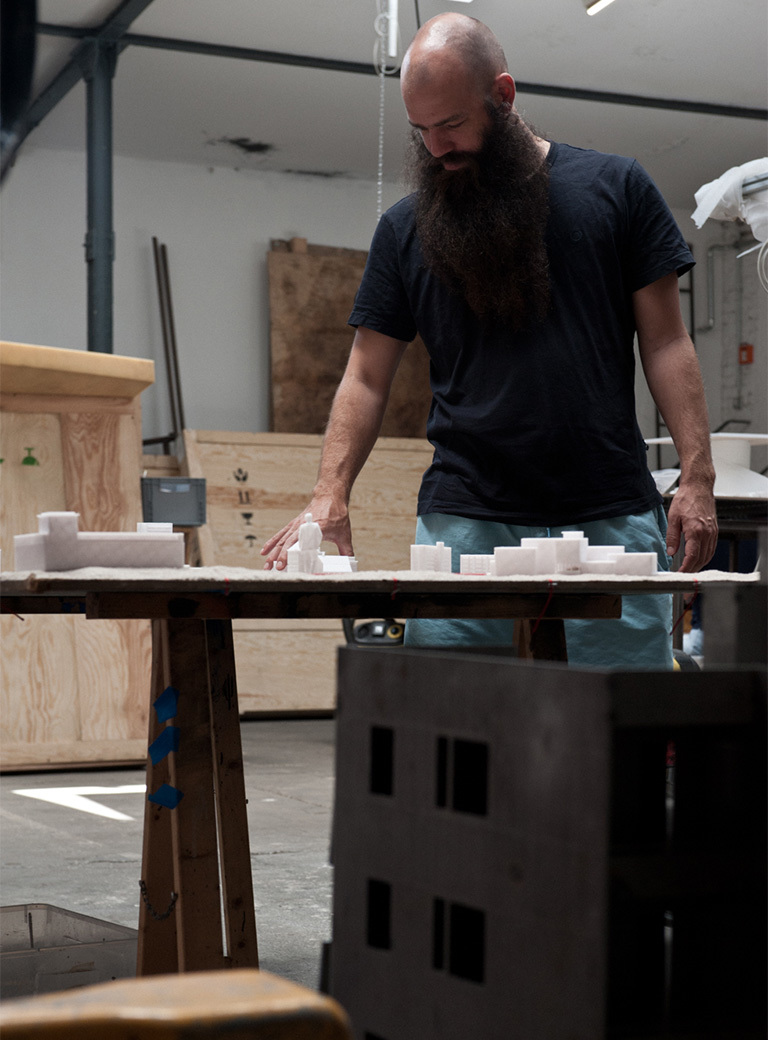
That’s what Julian and you realized with your joint work Some Pigeons Are More Equal Than Others 2012. You developed a machine, in which pigeons were captured in public places, sprayed with non-toxic paint, then released. What was it precisely, that fascinated you about this project?
Pigeons are an important part of our environment, but they are not nature. They emerged from a pigeon that had been bred by humans ages ago and then turned wild again. Pigeons have become wild in the urban space, which means these pigeons could not survive in the countryside at all, they need the urban space and consequently share it with us. They are our colleagues that can only survive in the same space as us. With the street pigeon we have an animal that exists, that does extraordinary things, that flies around in a flock, cleans the ground of organic matter, yet, at the same time shits on everything. Pigeons share a social life, recognize people, have a good sense of orientation, more so than in many other animals, all of which we know, while failing to understand completely how or why that is the case. A complex and exciting animal, which is dismissed by many as a "flying rat", people who say, it is not a real example of nature because it is an animal created by humans, just like the rat and the cockroach. It was a process to rehabilitate this animal into nature, as nature, a process that reveals how absurd our view of nature is and our assessment of what is valuable and what isn’t. By way of contrast, in the eyes of many, the parrot is a wild, beautiful, and precious animal worthy of being protected, yet the pigeon is not. If we paint the pigeons to resemble parrots, we are forced to question our assessment of nature.
Some of your works have attracted a lot of attention, such as "Art", a series of writings on nature which along with Julian Charriére, you realized beginning in 2012. This even made you the number one public enemy in Iceland. How did that happen?
Art is a series of nature graffiti and was at first a supposedly stupid work. For example, there is "forest" written on a forest, "mountain" on a mountain and so on. We wanted to use this initial moment of absurdity – I mean, who is so stupid and writes "tree" on a tree and then it’s also so ugly – the viewer immediately condemns this as totally ridiculous. But this classification of nature happens exactly when you look at it. The same happens with the pigeon, which is not seen as nature, but as a pest. Nature is categorized. One piece of nature is designated a national park, the other not. One is an important crater because it is the largest and the destination of all tourists on Iceland, but the other is not. We wrote "crater" on the crater and destroyed it for the tourists. The crater doesn't care if the term crater is written on top of it, but the tourists do. The Icelanders were quite angry with us and there was a request for our expulsion back to Germany, we were the state enemy number 1 and we were portrayed as the most stupid artists in the world by all. Turning the tide was not so easy with our explanation that the work rather mirrors the stupidity of the people themselves. However, we apologized. We didn't damage nature, but we hurt the feelings of the people in Iceland. By now, the perceived injury is digested and what remains is an interesting discussion of the issue.
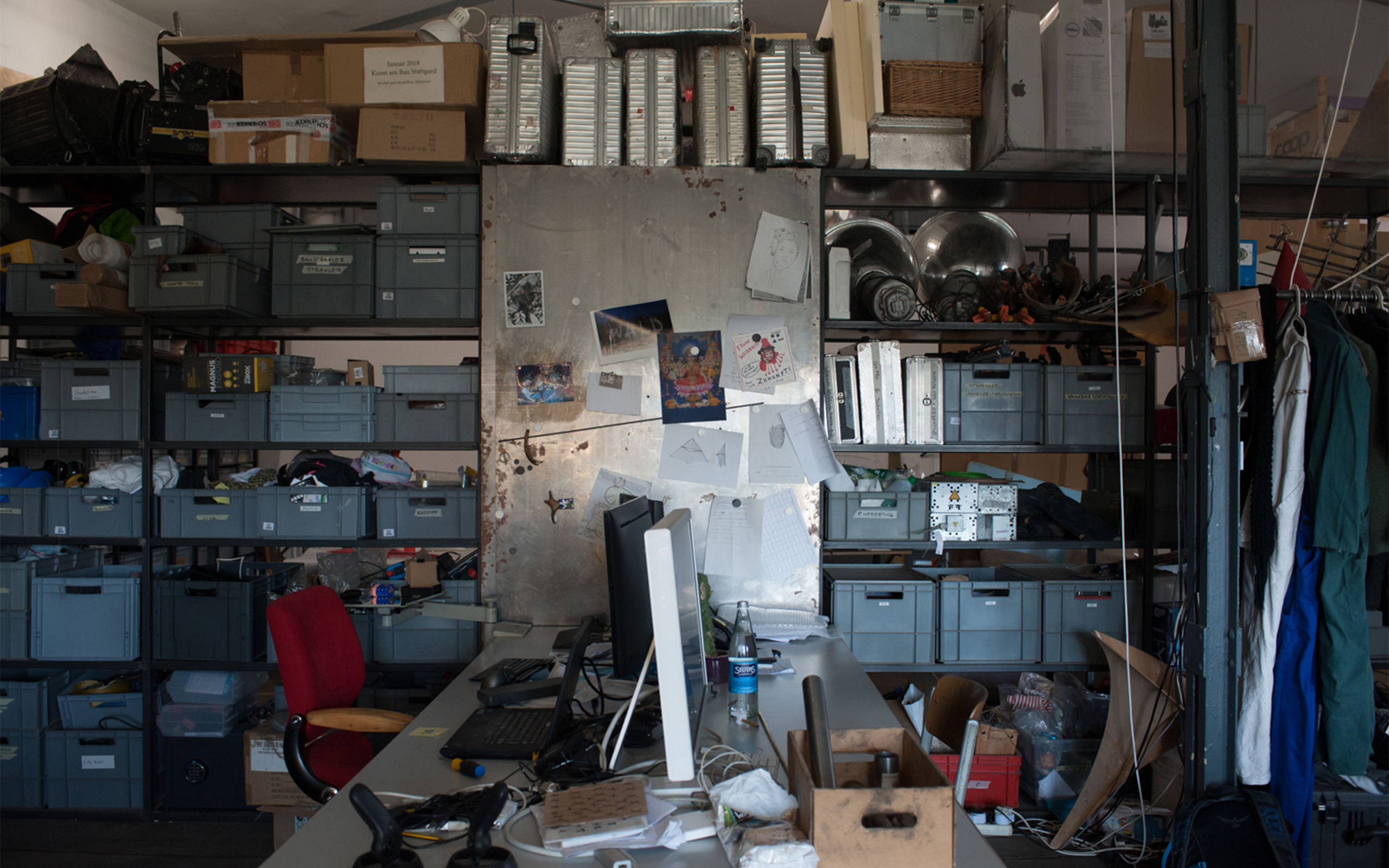
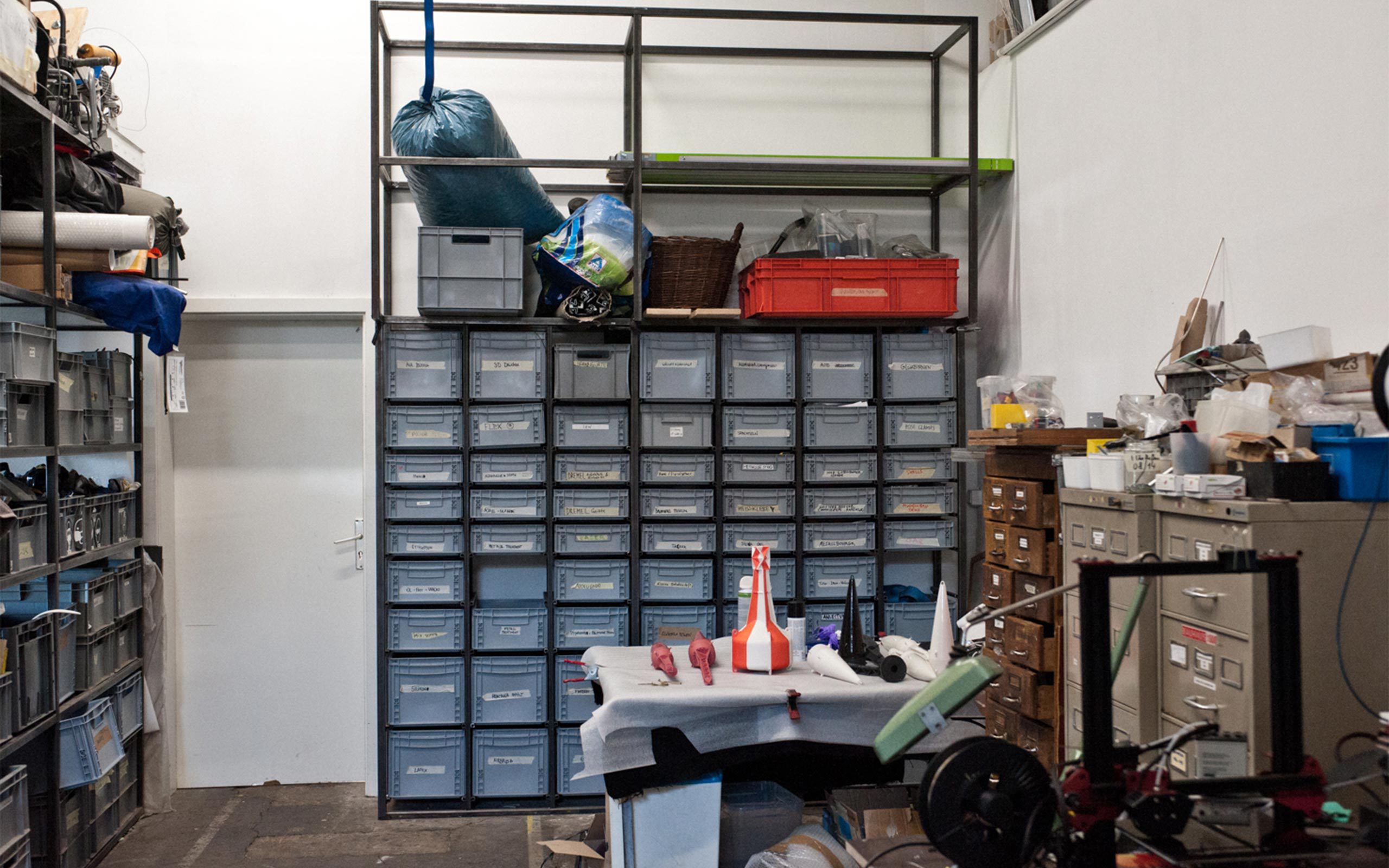
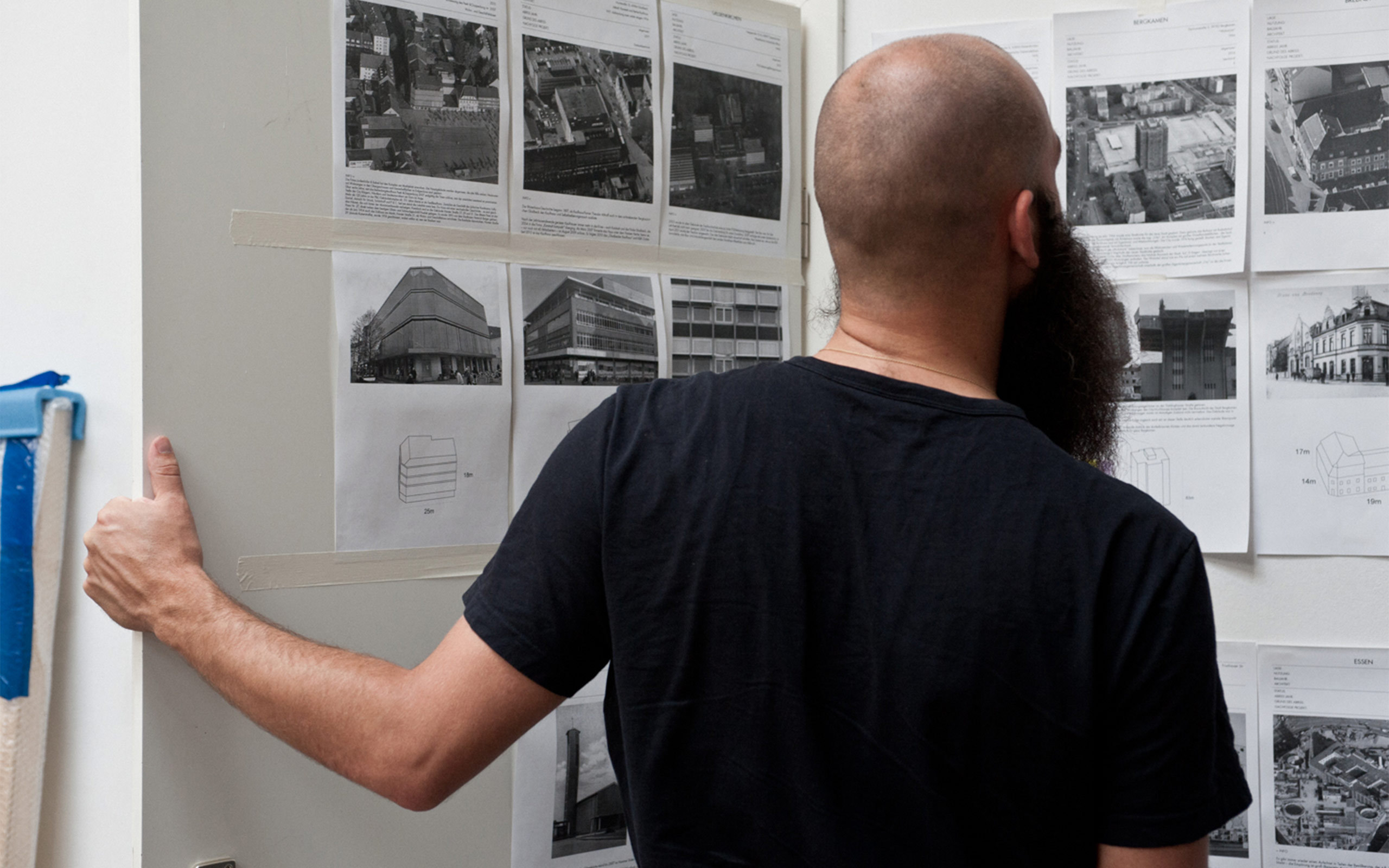
With one of your most recent video works I AM AFRAID, again created in collaboration with Julian Charrière, you managed to deceive the American media landscape including Fox News, ABC, and CNN causing a huge scandal.
Yes, we wondered what would happen if a terrorist group were to destroy protected features integral to American natural monuments and parks, just as the Taliban destroyed the Buddha statues of Bamiyan because they represented the wrong God, or as ISIS destroyed the temples of Palmyra. We wanted to invent fictional terrorists who, for example, would destroy the rock formations in Utah National Park and look at the discussion that would follow. How would people interpret this act? Of course, we wouldn't do it in reality, but wanted to pretend. And pretending to do it was a lot of work, but it was also part of the work. We implemented the work across the border in Mexico, where we found the same desert with similar rock formations as in the US. We built our own monuments from stones that look like natural monuments, and then we blew up the replicated rock arches. The work has two parts, the first is about the question: what happens when you build a natural monument with human hands? The process was formally exciting for us. The second was the question: what happens if you then destroy this monument with explosives and upload it onto the Internet, without specifying the location, and suggest it happened in Utah?
You’ve created fake profiles and uploaded the videos of the blasting on the net.
Yes. We tested a little bit everywhere and looked at what would work well. Some things we were able to influence with moderate success using methods known to have been used in social networks in the election campaigns. But we’ve already reached a few thousand people and received real comments. On LiveLeak it went viral without any input from us, from there it went to TV.
There are several interesting levels in this work. One is that media outlets like Fox News, ABC, and CNN wondered whether the video was real and consulted experts.
Exactly, the interesting thing is: what do people expect? It was nice to see that the understanding of the Americans was predictably America-centric. It was immediately clear to them that the video was made in the US, nobody considered the possibility that it could have happened somewhere else. Nevertheless, it quickly became clear that it hadn’t actually occurred in the Utah National Park since all of the arches there were still intact, therefore it had to be a digital fake, it occurred to no one that it could have happened in any one of the many deserts in the world. And this is not purely an American phenomenon, but rather a typical human trait, similar to those puzzles in which you only have to take one step out, but it’s incredibly difficult. Then the video expert is consulted and reports that we must have digitally created the geological feature using material from Utah and other locations. No one imagined that we had created the feature physically and that the detonation was real!
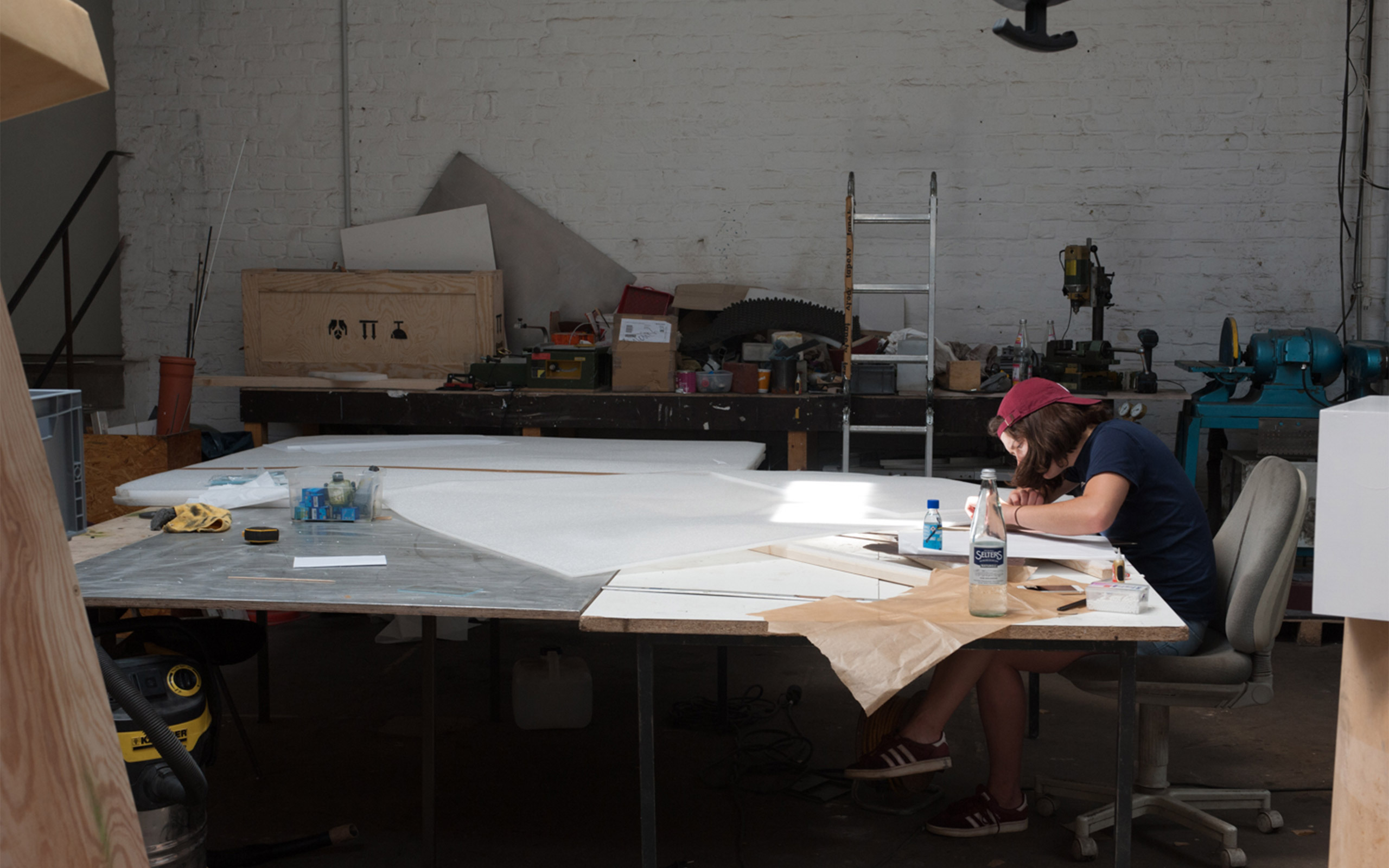
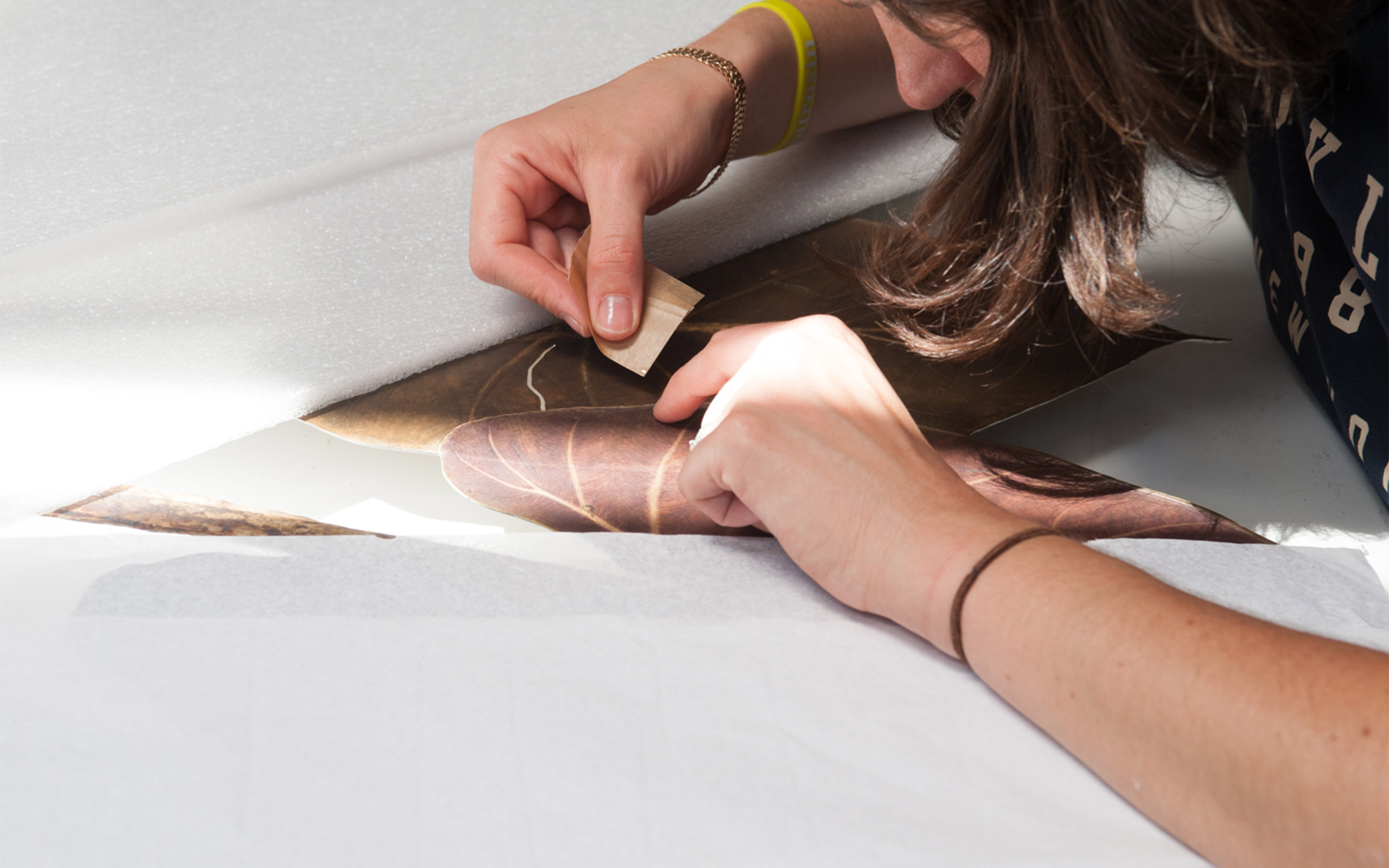
Is there a prejudice or misunderstanding about your art that persists? For example, something like the accusation that you just want to know how far you can go?
Sometimes there are quite shortsighted misunderstandings. It occurs usually with people who condemn my work before they have even reflected on it for a second. Sometimes I play with a supposed simplicity; at first glance the work might appear stupid. But nobody can be that stupid. But some people think so. As an artist, I think it is okay to do this to embarrass myself because I can choose to. I am not a politician who wishes to be loved by all. It is totally okay if people think I’m stupid. My intention is to thematize these topics that are important to me and I am quite successful at doing so using these tactics.
At times can something be misinterpreted in your art?
Yes, perhaps it has to be so, I always create my works in ways that are a bit ambivalent, in such a way that are never clearly interpretable, because it is exactly this little inkling of doubt about the work and its meaning that I consider an important element by which to generate discourse. If a work is completely simple, one looks at it then moves on to the next and forgets about the first one, which therefore hasn’t been dealt with. This potential for misunderstanding is an important aspect of the work and can also be quite amusing.
What are your current projects?
I'm currently working on a project for Emscherkunstweg to which Britta Peters (Artistic Director, Urban Arts Ruhr) invited me. At first glance, it doesn't quite fit in with my other works. In this project I pick up on an idea that has occupied me for a long time; it's about building politics, architecture, urban planning and fantasies in urban planning, about a parallel reality that I create, through a city that consists of demolished houses. This is something I have always dreamed of. I think a lot about aesthetics in public space and the question of who decides what looks how and what effect it has on the people who live in that space. Of course, you can relate the work back to my previous work, but you don't have to. It doesn't always have to be all of a piece.
